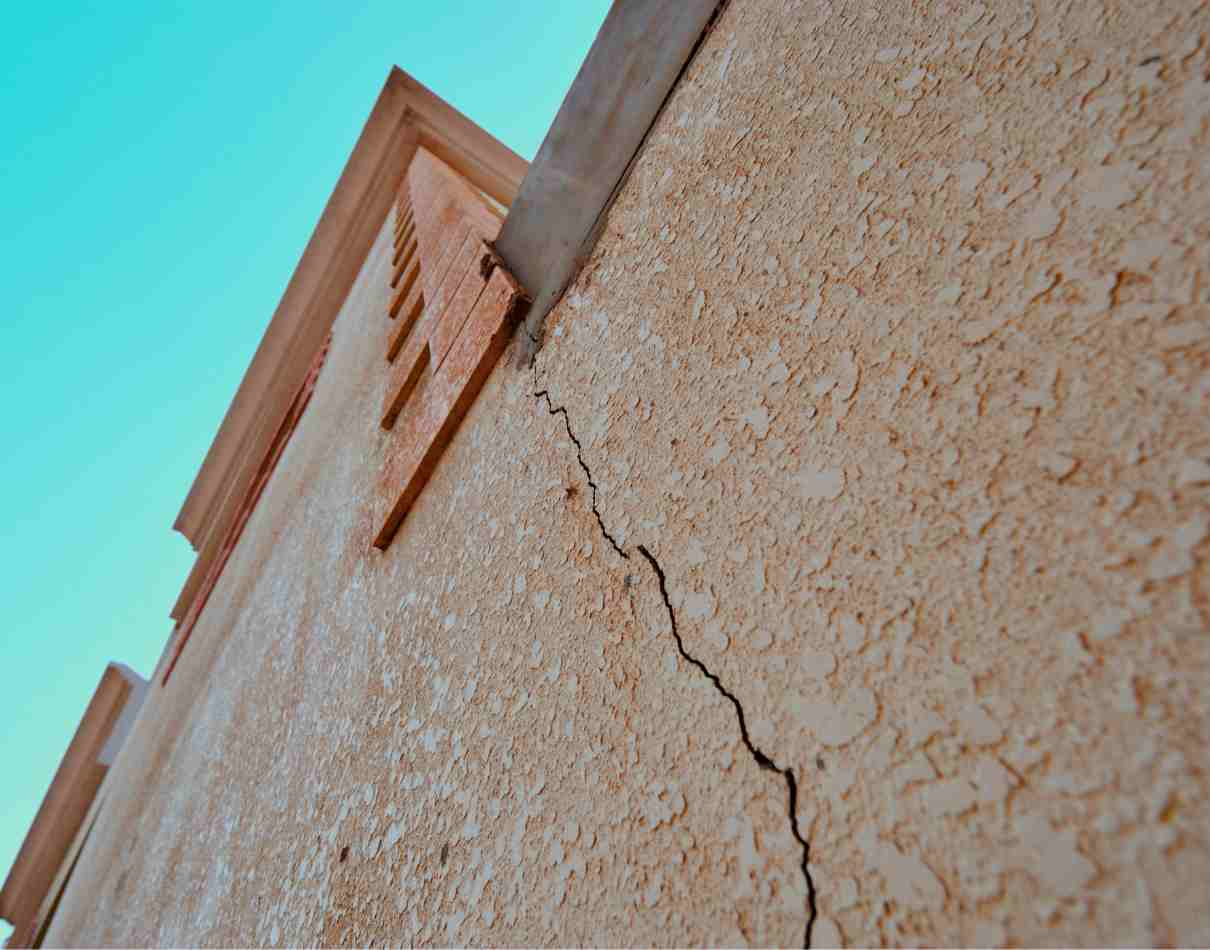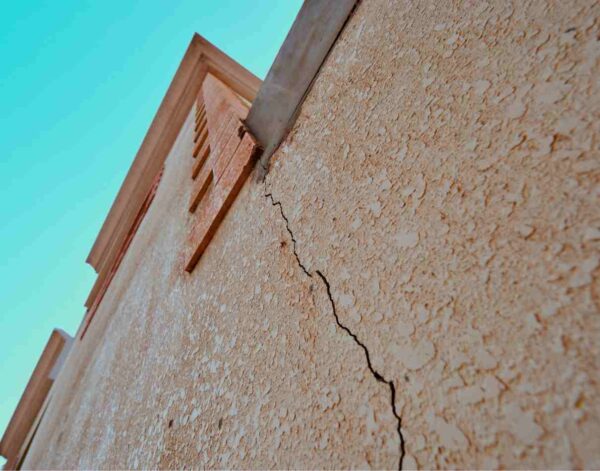
Concrete cracks are inevitable. Every commercial build in Southwest Florida will show them at some point — whether in slabs, walls, or structural elements. The question isn’t if you’ll see cracks, but when do they matter? For building managers, and property owners, knowing which cracks require immediate concrete repair and which can simply be monitored is key to protecting both safety and budgets.
Concrete cracks are categorized as active or dormant.
Dormant cracks: These stay unchanged once formed. While they may look harmless, they can still allow water intrusion, corrosion of rebar, or surface deterioration if left untreated.
Active cracks: These continue to widen, lengthen, or shift over time. They’re a red flag for structural movement or ongoing settlement and usually require professional evaluation and repair.
1. Hairline Cracks (Typically Non-Critical)
Hairline concrete cracks are extremely thin (often less than 1/16 inch wide) and are among the most common you’ll see in new slabs or walls. They usually appear as the concrete cures and shrinks, especially if the surface dries too quickly during placement.
- Cause: Shrinkage during curing, temperature changes, or surface tension from improper finishing.
- Why they matter: While they rarely affect structural integrity on their own, hairline cracks can still allow moisture intrusion. In a humid climate like Southwest Florida, that moisture accelerates deterioration or mold growth in adjacent materials.
- Concrete repair approach: Sealants or surface treatments are often enough. The key is monitoring to ensure the crack doesn’t widen into an active structural issue.
Although hairline concrete cracks are not usually a cause for alarm, they should never be ignored. Routine inspections and simple concrete repair methods can keep these small flaws from developing into larger, more costly problems.
2. Crazing Cracks (Typically Non-Critical)
Crazing appears as a network of very fine, shallow cracks that look like spider webs or shattered glass across the surface. They usually occur in slabs or flatwork and are more visible when the surface is wet or sealed.
- Cause: Rapid surface drying during finishing, over-troweling, or using a mix with too much water.
- Why they matter: Crazing doesn’t typically threaten the structural integrity of a slab, but it can create an uneven look. On commercial projects where appearance matters — such as exposed floors or entryways — crazing can be seen as a quality issue.
- Concrete repair approach: Since crazing is superficial, full structural repair isn’t needed. Sealers, overlays, or polishing can improve appearance and protect against moisture penetration.
Although crazing concrete cracks rarely progress into deeper structural issues, they do signal improper curing or finishing practices.
3. Control Joint Cracks (Typically Non-Critical)
Control joints are placed deliberately to manage where cracks will occur as concrete shrinks. Cracks within these joints are expected and not a sign of failure.
- Cause: Normal drying shrinkage and slab movement.
- Why they matter: On their own, control joint cracks aren’t structural concerns. Problems only arise if the joint edges start breaking down or if water, chemicals, or debris penetrate the joint, which can accelerate wear in commercial slabs.
- Concrete repair approach: Instead of “fixing the crack,” maintenance usually involves resealing the joint or replacing filler to protect the slab edges and prevent moisture intrusion.
Control joint cracks themselves don’t require concrete repair — but maintaining the joint prevents small maintenance issues from escalating.
4. Settlement Cracks — Needs Repair
Settlement concrete cracks are irregular, uneven breaks in the slab caused by the ground beneath shifting or compressing. They can run in random directions and are often wider than hairline cracks.
- Causes: Poor soil compaction before pouring, erosion from water movement, or plumbing leaks washing out soil beneath the slab.
- Prevention: Proper site prep with compacted and stabilized subgrade, drainage control, and addressing underground leaks before pouring.
- Concrete Repair Approach: Settlement cracks typically require structural concrete repair such as slab jacking, underpinning, or epoxy injection. If the underlying soil isn’t stabilized, repairs will fail — so ground remediation is critical before sealing or patching.
Settlement cracks compromise slab stability and almost always need intervention to prevent progressive damage. Leaving them untreated can allow further structural movement and water intrusion.
5. Drying Shrinkage Cracks — Needs Repair (Depends on Severity)
These concrete cracks appear when concrete loses moisture too quickly after placement, causing the surface to contract and pull apart.
- Causes: Rapid water evaporation in hot, windy weather; mixes with too much water; inadequate curing practices.
- Prevention: Use proper water-to-cement ratios, cure with moisture-retaining methods (curing blankets, misting), and avoid pouring in extreme heat without protection.
- Concrete Repair Approach: Minor shrinkage cracks may only need surface sealing to block moisture intrusion. Larger or deeper cracks require epoxy injection or routing and sealing to restore integrity.
While not always structurally critical, untreated shrinkage cracks can expand and create pathways for deterioration.
6. Structural Cracks — Needs Repair (Critical)
Structural cracks are the most serious, often wider than ¼ inch, and can extend through the slab, beams, or load-bearing members.

- Causes: Excessive load, design flaws, foundation movement, or inadequate reinforcement.
- Prevention: Proper structural engineering, correct reinforcement placement, and load management during construction.
- Concrete Repair Approach: Structural concrete repair may involve epoxy injection, carbon fiber reinforcement, or in severe cases, partial demolition and recasting. These always require engineering evaluation before repair.
Structural cracks are red flags — they demand immediate attention to prevent failures.
7. Spalling Cracks — Needs Concrete Repair
Spalling occurs when pieces of concrete flake or break away, often leaving rough, pitted surfaces.
- Causes: Corroded rebar expanding within the concrete, impact damage, or poor finishing techniques.
- Prevention: Use proper concrete cover over reinforcement, apply sealants to prevent water intrusion, and protect exposed surfaces from heavy impact.
- Concrete Repair Approach: Spalled areas are repaired by removing loose concrete, cleaning and treating corroded steel, and resurfacing with patching compounds or overlays. For larger areas, shotcrete or resurfacing may be required.
Spalling left unchecked exposes reinforcement, accelerates corrosion, and weakens the structure.
8. Alligator Cracks — Needs Concrete Repair
These cracks resemble an alligator’s skin — a network of interlaced cracks that signal surface fatigue and subgrade failure.
- Causes: Repeated heavy loading, poor subgrade compaction, or thin slab thickness.
- Prevention: Design slabs with proper thickness and reinforcement for expected loads, and ensure thorough subgrade preparation.
- Concrete Repair Approach: Spot patching is rarely effective. True concrete repair requires removing the damaged section, correcting the subgrade, and repouring the slab with adequate thickness and reinforcement.
Alligator cracks almost always point to deeper slab or soil issues, not just surface wear.
9. Capillary Cracks — Non-Critical (Monitor)
Capillary cracks are fine, spiderweb-like surface cracks that usually form from surface drying and shrinkage.
- Causes: Water rising through the mix and evaporating, improper curing, or overly wet concrete.
- Prevention: Control water content in the mix and use proper curing techniques.
- Concrete Repair Approach: Most capillary cracks don’t need immediate concrete repair beyond sealing to protect against moisture intrusion. If widespread, a thin overlay may restore aesthetics.
Capillary cracks are generally cosmetic, but monitoring ensures they don’t expand under weathering or wear.
10. Expansion Cracks — Needs Concrete Repair
Expansion cracks occur when concrete expands from heat or moisture and pushes against restraints with no room to move.
- Causes: Thermal expansion, lack of proper expansion joints, or restrained slabs butting against walls or other slabs.
- Prevention: Incorporate expansion joints at designed intervals, use proper joint materials, and allow for slab movement in design.
- Concrete Repair Approach: Expansion cracks require cutting or restoring joints to relieve stress, followed by sealing. Where damage is severe, partial slab replacement with proper joint placement is needed.
Ignoring expansion cracks guarantees repeat failures — they must be addressed with engineered concrete repair strategies.
At Valtex our focus is on commercial concrete repair and structural framing across Southwest Florida. From minor cracking that only needs monitoring to serious structural failures, our crews approach every project with the goal of protecting the long-term performance of the building. When durability, safety, and precision matter most, property managers and contractors turn to Valtex for concrete repair that’s done right the first time.
